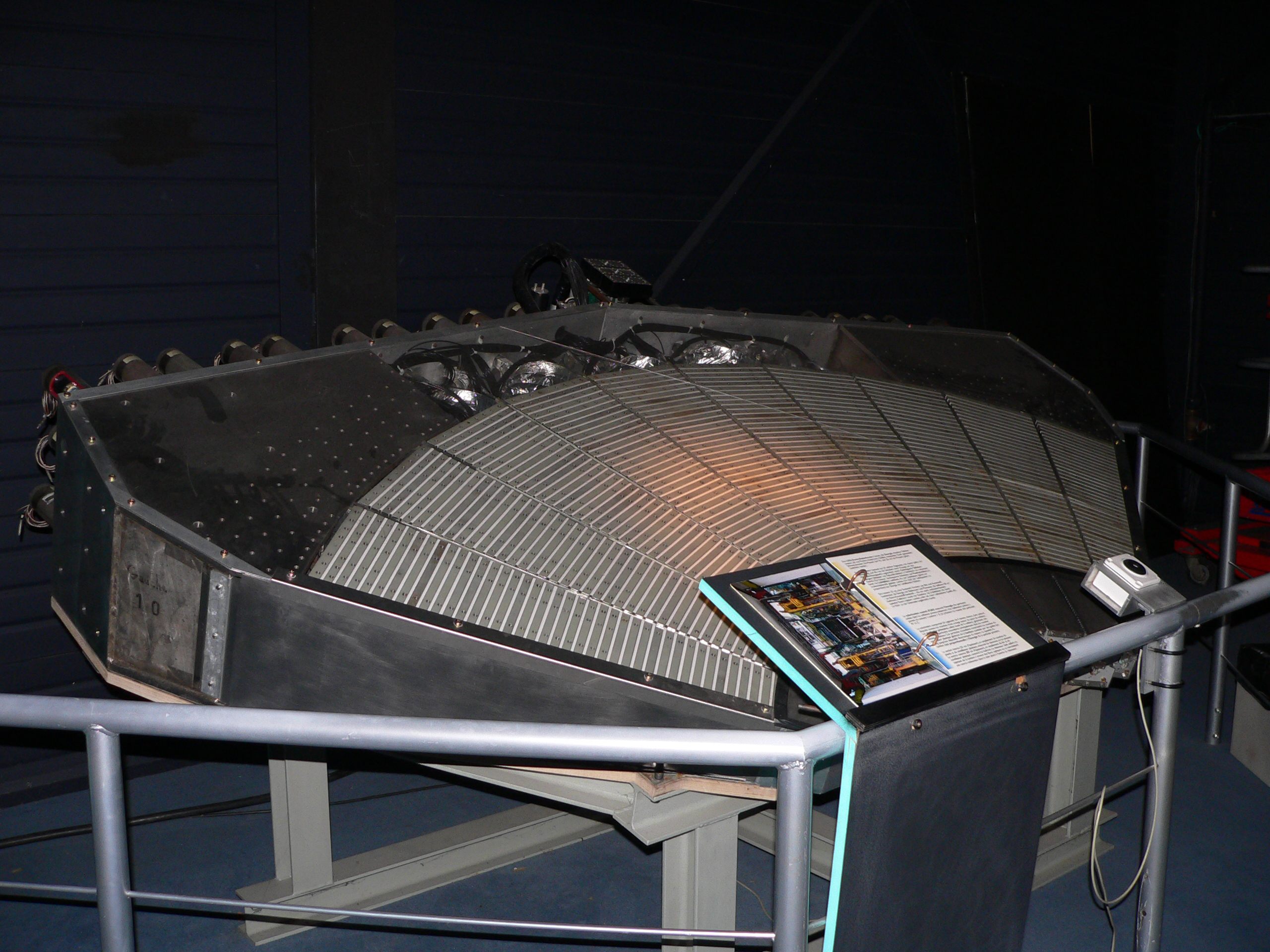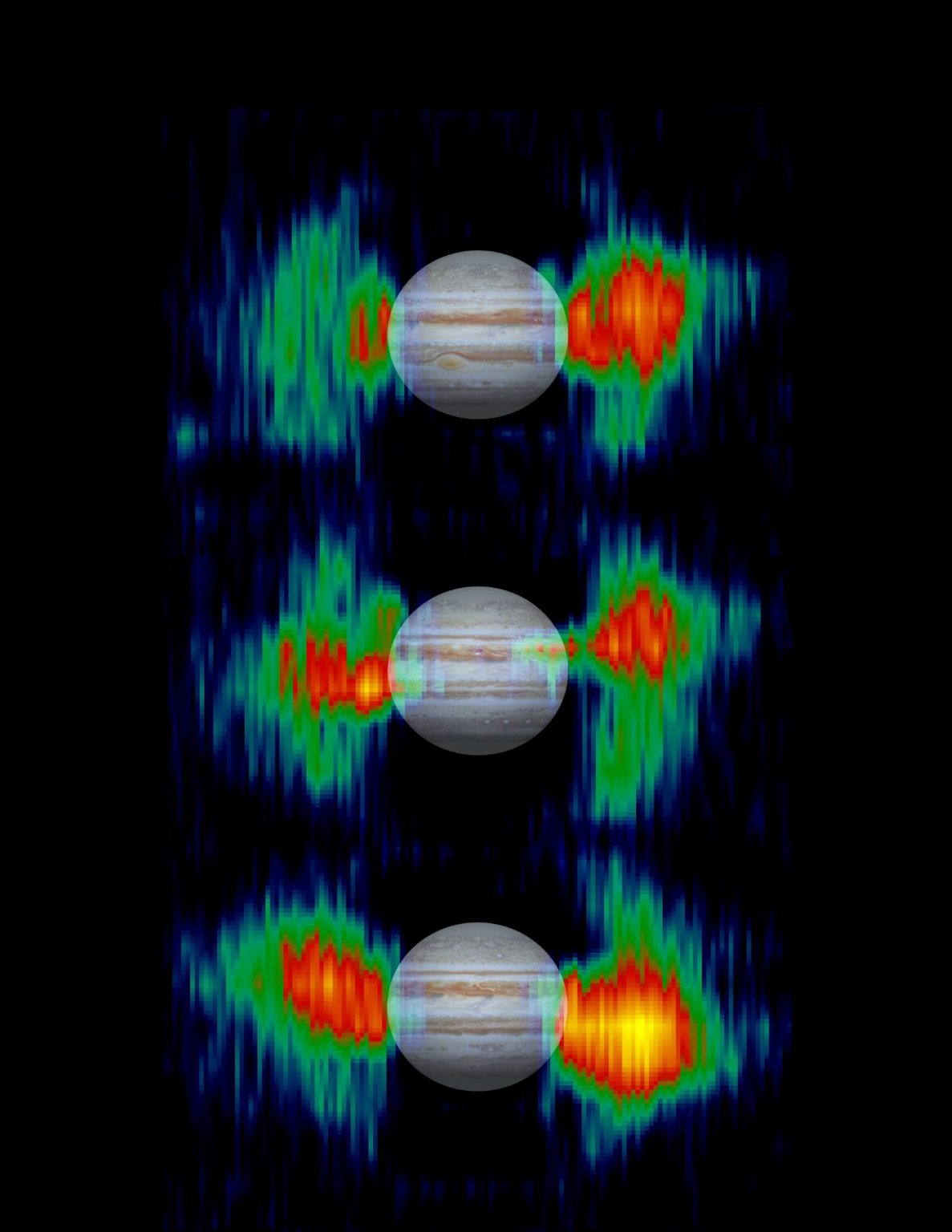|
Payload For Antimatter Matter Exploration And Light-nuclei Astrophysics
PAMELA (Payload for Antimatter Matter Exploration and Light-nuclei Astrophysics) was a cosmic ray research module attached to an Earth orbiting satellite. ''PAMELA'' was launched on 15 June 2006 and was the first satellite-based experiment dedicated to the detection of cosmic rays, with a particular focus on their antimatter component, in the form of positrons and antiprotons. Other objectives included long-term monitoring of the solar modulation of cosmic rays, measurements of energetic particles from the Sun, high-energy particles in Earth's magnetosphere and Jovian electrons. It was also hoped that it may detect evidence of dark matter annihilation. PAMELA operations were terminated in 2016, as were the operations of the host-satellite Resurs-DK1. The experiment was a recognized CERN experiment (RE2B). Development and launch ''PAMELA'' was the largest device up to the time built by the Wizard collaboration, which includes Russia, Italy, Germany and Sweden and has been invo ... [...More Info...] [...Related Items...] OR: [Wikipedia] [Google] [Baidu] |
Dark Matter
In astronomy, dark matter is an invisible and hypothetical form of matter that does not interact with light or other electromagnetic radiation. Dark matter is implied by gravity, gravitational effects that cannot be explained by general relativity unless more matter is present than can be observed. Such effects occur in the context of Galaxy formation and evolution, formation and evolution of galaxies, gravitational lensing, the observable universe's current structure, mass position in galactic collisions, the motion of galaxies within galaxy clusters, and cosmic microwave background Anisotropy, anisotropies. Dark matter is thought to serve as gravitational scaffolding for cosmic structures. After the Big Bang, dark matter clumped into blobs along narrow filaments with superclusters of galaxies forming a cosmic web at scales on which entire galaxies appear like tiny particles. In the standard Lambda-CDM model of cosmology, the mass–energy equivalence, mass–energy content o ... [...More Info...] [...Related Items...] OR: [Wikipedia] [Google] [Baidu] |
Solar System
The Solar SystemCapitalization of the name varies. The International Astronomical Union, the authoritative body regarding astronomical nomenclature, specifies capitalizing the names of all individual astronomical objects but uses mixed "Solar System" and "solar system" structures in theinaming guidelines document. The name is commonly rendered in lower case ('solar system'), as, for example, in the ''Oxford English Dictionary'' an''Merriam-Webster's 11th Collegiate Dictionary''. is the gravitationally bound Planetary system, system of the Sun and the objects that orbit it. It Formation and evolution of the Solar System, formed about 4.6 billion years ago when a dense region of a molecular cloud collapsed, forming the Sun and a protoplanetary disc. The Sun is a typical star that maintains a hydrostatic equilibrium, balanced equilibrium by the thermonuclear fusion, fusion of hydrogen into helium at its stellar core, core, releasing this energy from its outer photosphere. As ... [...More Info...] [...Related Items...] OR: [Wikipedia] [Google] [Baidu] |
Calorimeter (particle Physics)
In experimental particle physics, a calorimeter is a type of detector that measures the energy of subatomic particle, particles. Particles enter the calorimeter and initiate a particle shower in which their energy is deposited in the calorimeter, collected, and measured. The energy may be measured in its entirety, requiring total containment of the particle shower, or it may be sampled. Typically, calorimeters are segmented transversely to provide information about the direction of the particle or particles, as well as the energy deposited, and longitudinal segmentation can provide information about the identity of the particle based on the shape of the shower as it develops. Calorimetry design is an active area of research in particle physics. Types of calorimeters Electromagnetic versus hadronic such as electrons, positrons and photons. A . (See Particle shower#Types of showers, types of particle showers for the differences between the two.) Calorimeters are characterized b ... [...More Info...] [...Related Items...] OR: [Wikipedia] [Google] [Baidu] |
CBC News
CBC News is the division of the Canadian Broadcasting Corporation responsible for the news gathering and production of news programs on the corporation's English-language operations, namely CBC Television, CBC Radio, CBC News Network, and CBC.ca. Founded in 1941 by the public broadcaster, CBC News is the largest news broadcaster in Canada and has local, regional, and national broadcasts and stations. It frequently collaborates with its organizationally separate French-language counterpart, Radio-Canada Info. History The first CBC newscast was a bilingual radio report on November 2, 1936. The CBC News Service was inaugurated during World War II on January 1, 1941, when Dan McArthur, chief news editor, had Wells Ritchie prepare for the announcer Charles Jennings a national report at 8:00 pm. Previously, CBC relied on The Canadian Press to provide it with wire copy for its news bulletins. Readers who followed Jennings were Lorne Greene, Frank Herbert and Earl Cameron. '' ... [...More Info...] [...Related Items...] OR: [Wikipedia] [Google] [Baidu] |
Science (magazine)
''Science'' is the peer-reviewed academic journal of the American Association for the Advancement of Science (AAAS) and one of the world's top academic journals. It was first published in 1880, is currently circulated weekly and has a subscriber base of around 130,000. Because institutional subscriptions and online access serve a larger audience, its estimated readership is over 400,000 people. ''Science'' is based in Washington, D.C., United States, with a second office in Cambridge, UK. Contents The major focus of the journal is publishing important original scientific research and research reviews, but ''Science'' also publishes science-related news, opinions on science policy and other matters of interest to scientists and others who are concerned with the wide implications of science and technology. Unlike most scientific journals, which focus on a specific field, ''Science'' and its rival ''Nature'' cover the full range of scientific disciplines. According to the '' ... [...More Info...] [...Related Items...] OR: [Wikipedia] [Google] [Baidu] |
Annihilation
In particle physics, annihilation is the process that occurs when a subatomic particle collides with its respective antiparticle to produce other particles, such as an electron colliding with a positron to produce two photons. The total energy and momentum of the initial pair are conserved in the process and distributed among a set of other particles in the final state. Antiparticles have exactly opposite additive quantum numbers from particles, so the sums of all quantum numbers of such an original pair are zero. Hence, any set of particles may be produced whose total quantum numbers are also zero as long as conservation of energy, conservation of momentum, and conservation of spin are obeyed. During a low-energy annihilation, photon production is favored, since these particles have no mass. High-energy particle colliders produce annihilations where a wide variety of exotic heavy particles are created. The word "annihilation" takes its use informally for the interaction of t ... [...More Info...] [...Related Items...] OR: [Wikipedia] [Google] [Baidu] |
National Geographic Society
The National Geographic Society, headquartered in Washington, D.C., United States, is one of the largest nonprofit scientific and educational organizations in the world. Founded in 1888, its interests include geography, archaeology, natural science, the promotion of environmental protection, environmental and historical preservation, historical conservation movement, conservation, and the study of civilization, world culture and World history (field), history. The National Geographic Society's logo is a yellow page orientation, portrait frame—rectangular in shape—which appears on the Margin (typography), margins surrounding the front covers of its magazines and as its television channel logo. Through National Geographic Partners (a joint venture with The Walt Disney Company), the Society operates the National Geographic, magazine, National Geographic Global Networks, TV channels, a website, worldwide events, and other media operations. Overview The National Geographic S ... [...More Info...] [...Related Items...] OR: [Wikipedia] [Google] [Baidu] |
Antineutron
The antineutron is the antiparticle of the neutron with symbol . It differs from the neutron only in that some of its properties have equal magnitude but opposite sign. It has the same mass as the neutron, and no net electric charge, but has opposite baryon number (+1 for neutron, −1 for the antineutron). This is because the antineutron is composed of antiquarks, while neutrons are composed of quarks. The antineutron consists of one up antiquark and two down antiquarks. Background The antineutron was discovered in proton–antiproton collisions at the Bevatron (Lawrence Berkeley National Laboratory) by the team of Bruce Cork, Glen Lambertson, Oreste Piccioni, and William Wenzel in 1956, one year after the antiproton was discovered. Since the antineutron is electrically neutral, it cannot easily be observed directly. Instead, the products of its annihilation with ordinary matter are observed. In theory, a free antineutron should decay into an antiproton, a positron, and ... [...More Info...] [...Related Items...] OR: [Wikipedia] [Google] [Baidu] |
Van Allen Belt
The Van Allen radiation belt is a zone of energetic charged particles, most of which originate from the solar wind, that are captured by and held around a planet by that planet's magnetosphere. Earth has two such belts, and sometimes others may be temporarily created. The belts are named after James Van Allen, who published an article describing the belts in 1958. Earth's two main belts extend from an altitude of about above the surface, in which region radiation levels vary. The belts are in the inner region of Earth's magnetic field. They trap energetic electrons and protons. Other nuclei, such as alpha particles, are less prevalent. Most of the particles that form the belts are thought to come from the solar wind while others arrive as cosmic rays. By trapping the solar wind, the magnetic field deflects those energetic particles and protects the atmosphere from destruction. The belts endanger satellites, which must have their sensitive components protected with adequat ... [...More Info...] [...Related Items...] OR: [Wikipedia] [Google] [Baidu] |
WIMPs
Weakly interacting massive particles (WIMPs) are hypothetical particles that are one of the proposed candidates for dark matter. There exists no formal definition of a WIMP, but broadly, it is an elementary particle which interacts via gravity and any other force (or forces) which is as weak as or weaker than the weak nuclear force, but also non-vanishing in strength. Many WIMP candidates are expected to have been produced thermally in the early Universe, similarly to the particles of the Standard Model according to Big Bang cosmology, and usually will constitute cold dark matter. Obtaining the correct abundance of dark matter today via thermal production requires a self-annihilation cross section of \langle \sigma v \rangle ≃ , which is roughly what is expected for a new particle in the 100 GeV/''c''2 mass range that interacts via the electroweak force. Experimental efforts to detect WIMPs include the search for products of WIMP annihilation, including gamma rays, neut ... [...More Info...] [...Related Items...] OR: [Wikipedia] [Google] [Baidu] |
Soyuz (rocket)
The Soyuz (, meaning "union", GRAU index 11A511) was a Soviet expendable carrier rocket designed in the 1960s by OKB-1 and manufactured by State Aviation Plant No. 1 in Kuybyshev, Soviet Union. It was commissioned to launch Soyuz spacecraft as part of the Soviet human spaceflight program, first with eight uncrewed test flights, followed by the first 19 crewed launches. The original Soyuz also propelled four test flights of the improved Soyuz 7K-T capsule between 1972 and 1974. It flew 30 successful missions over ten years and suffered two failures. The Soyuz 11A511 type, a member of the R-7 family of rockets, first flew in 1966 and was an attempt to standardize the R-7 family and get rid of the variety of models that existed up to that point. It was basically a Molniya 8K78M without the Blok L stage. It featured the 8D74M RD-107 and the RD-110 engines from the 8K78M, The new, uprated core stage and strap-ons became standard for all R-7 derived launch vehicles to replace ... [...More Info...] [...Related Items...] OR: [Wikipedia] [Google] [Baidu] |




